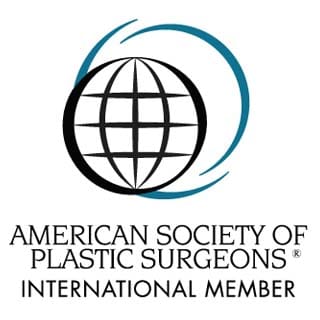
Breast implant replacement surgery is dreaded by some and anticipated by others. It depends on where on the journey you currently sit. Once you have gone through the breast augmentation procedure, you would want to enjoy the results for as long as possible. However, there would be a point of time when your doctor tells you that you’re going to need breast revision surgery, preferably within a decade.
This may not be to your liking, but it’s part of the treatment – you know, like a packaged deal. Let’s go through the main aspects of the procedure so that you gain valuable insights into why it has to be performed and when.
Hopefully, this will help you understand that replacing implants is as big of a deal as the original treatment itself.
In Singapore, the average price of the revision treatment runs anywhere between $9,000 and $15,000. You can expect these numbers to fluctuate from area to area.
With respect to the price, breast revision and replacement breast implant surgery don't differ much from the original implant procedure. You still need to pay for the surgeon’s experience and replacement implants. New generations of devices tend to be more expensive, besides the cost of living changes year after year.
And before you set foot in the doctor’s office, you should be cognizant of the lack of insurance coverage for it. Having said that, financing for the treatment may still be available for individuals with breast cancer who have had mastectomy sometime in their lives and would now be interested in getting breast reconstruction.
Breast replacement surgery is executed when the patient is fully sedated or under the effects of general anaesthesia. Hence, there is no pain during the process. When the anaesthesia is flushed out of your system, you will develop discomfort and swelling in the treatment areas, but the good news is it should wear off in a week or two. Plus, it can be subdued with prescribed painkillers. You know, plastic surgeons advise the use of certain medications that will do the trick.
The length of the procedure differs per patient and is based on the type of revision, implant placement, and other unique factors. In general, the surgical procedure can take up to 30 to 150 minutes.
Replacement breast implant treatment attempts to not only swap the existing implants with new ones but also improve the shape of the chest. Sometimes patients desire to have a breast reduction or enhancement. And some women just want to get their natural breasts back (breast implant removal).
In most cases, the board-certified plastic surgeon will go for the same implant pocket they created in the original treatment. When the incision placement technique is one, and the same, new scars are not expected to form. Currently, medicine has come up with an inframammary incision, transaxillary incision, and areolar incision. The fourth one, trans-umbilical incision, is rarely employed these days. If the breasts have dropped and sagged, the procedure can also involve a breast lift, as well as reshaping of the existing breast tissue.
What could make the breast implant revision more complicated are any existing complications resulting from the initial implants regarding the complication of capsular contracture. Hence, the subsequent surgery will comprise more steps that were not included the first time around.
Your plastic surgeon will shed more light on the procedure prior to the surgery. Truth be told, every patient will have a different experience since the goals, and body characteristics differ from one individual to the next.

An important factor to mention is implant placement. As a whole, the prostheses are inserted in the same place as the original implants. However, certain changes in the body may require that the breast implants are placed under or over the pectoralis major muscle, calling for a different technique.
The type of implant is another thing to consider. Just like you did with your previous surgery, with your replacement procedure, you can choose between various types of implants regarding the shape, material, texture, and breast size. For instance, round vs teardrop textured implants, silicone gel implants vs saline implants.
And lastly, you may consult the doctor for a breast lift if you need or want it. For one, it’s been a long time since your initial breast implant surgery, meaning you have aged, and your chest is probably a bit droopy now. Not to mention, you’ve probably had some weight loss/gain throughout the years.
Sometimes placing silicone implants alone doesn’t do the trick, especially if you have sagging skin. In that case, the experts will remove extra skin and breast tissue to give you a better, more youthful cleavage.
The risks are similar to those of the original breast augmentation treatment.
The best way to stay out of trouble is by picking a specialist with extensive plastic surgery training who has performed many treatments so far.
Some people experience silicone implant ruptures, inducing leakage most of the time. When this happens, it can severely impact the shape of the breasts. Saline implants are safe because they contain a saltwater solution that just gets resorbed. However, as it seeps out of the silicone shell, it brings about implant deflation and ruins the cosmetic results.
It is estimated that around 10 to 12 people out of 100 experience this problem over a duration of ten years. For others, the deflation occurs much earlier – in the first 3 years post-op. It’s relatively obvious to the naked eye. The same doesn’t always go for silicone breast implants. It may take a good while before you notice any difference.

There are a handful of reasons that someone would want to have a replacement procedure. The first and most important is that this person has had breast augmentation before. Here are the main prerequisites for this:
In the majority of cases, yes. The truth of the matter is many breast implants come with a 20-year warranty. While this sounds good, it’s not always ideal. Some manufacturers choose to offer 10-year protection to play it safe. After this time is up, they no longer provide a formal assurance that the breast implants will be as robust as they were at the beginning. Quality gets lost over time; the items can rupture and deflate, distorting the chest shape or causing health issues.
However, this doesn’t happen to each and every patient. There is no way to predict how the body will age and the way it will affect the implants. Some folks have no choice but to get subsequent surgery early on.
Others experience no health issues or difficulties with the breast implants, but they would go for another implant size. And then, there are cases where the devices look good even after 10 years of use, and the breasts appear to be fine.
To understand your individual situation, you need to have a word with a specialist and get examined. If there is no trace of implant leakage or other issues, you don’t have to jump on the breast surgery waggon yet, provided you get medical clearance on it.
With breast implant replacement surgery, you get the chance to refine the results that the original treatment achieved. You can change up your breast implants with a newer generation of breast implants that are sturdier, of greater quality, safer and that can be better tolerated by your body.
The problem may manifest itself in various ways:
Note that not all the above signals are always present. Sometimes the changes are so subtle that it may take a while before you or your doctor suspect that something is amiss and consider breast revision.

You will be put on a light diet on day one of your plastic surgery, which will allow your body to focus on rest. Liquids and soups are a great start. On the next day, you will be green-lit to include other foods in your regimen. For the first few days, it is better for you to sleep elevated. Use two or more pillows to support your head above the normal level.
At this point, you should get as much arm rest as you can. Do not raise your arms above your head and stay away from heavy objects. Wait at least 48 hours before you proceed to normal arm movements.
If you remember your original surgery correctly, you know that you are going to need a surgical bra. Keep it on for as long as your doctor has recommended. Your physician will authorise ingestion of pain medication once every few hours so that you stay on top of the pain and discomfort. If you have drains placed in the treatment site, make certain to empty them on the regular the way you’ve been taught.
Also, it will not be possible to shower the way you normally do. Try to keep the wound dry and clean at all times. If you need to wash your body, work from the waist down. On the third day, you will be permitted to take full showers as long as you don’t put pressure on the treatment site with the water stream coming out of the showerhead. Bathtubs are to be avoided altogether.
After your surgical procedure for breast enlargement, bruising and swelling will accompany you for a while but worry not. They will resolve on their own when you get further into the recovery phase. Your body knows what it’s doing. Just let it do its job right. When the pain is finally a thing of the past – about 10 days following breast implant revision – go ahead and massage your breasts but try not to exert that much pressure on them. Follow the staff’s instructions. It is noteworthy that you should proceed with the massages over the next 12 months. Feel free to return to work in 7 days for a desk job and 3-4 weeks for a physically demanding job.
All in all, a breast implant revision serves to fix old breast implants that have gone bad or are likely to cause complications in the future. Has the tissue underneath begun to sag, the procedure might necessitate a breast lift. Like you do with your initial augmentation, with this surgery, you have to select the breast implant type and size. For the most part, it’s a decision you make in conjunction with your doctor.
There are side effects, but if you opt for a well-trained expert, your prospects of running into complications are low.

Dr. Shenthilkumar Naidu (Dr. Shens) is a Ministry of Health accredited Consultatn Plastic Surgeon with extensive expertise in cosmetic and reconstructive surgery. He is renowned for his advanced techniques in body contouring and aesthetic enhancements. For more information, visit Shens Clinic.
Monday – Friday: 09:00am – 06:00pm
Saturday: 09:00am – 02:00pm
Sun and PH: Closed
(Strictly by appointment only)

Copyright ⓒ Shens Clinic | Privacy Policy | Terms and Conditions .